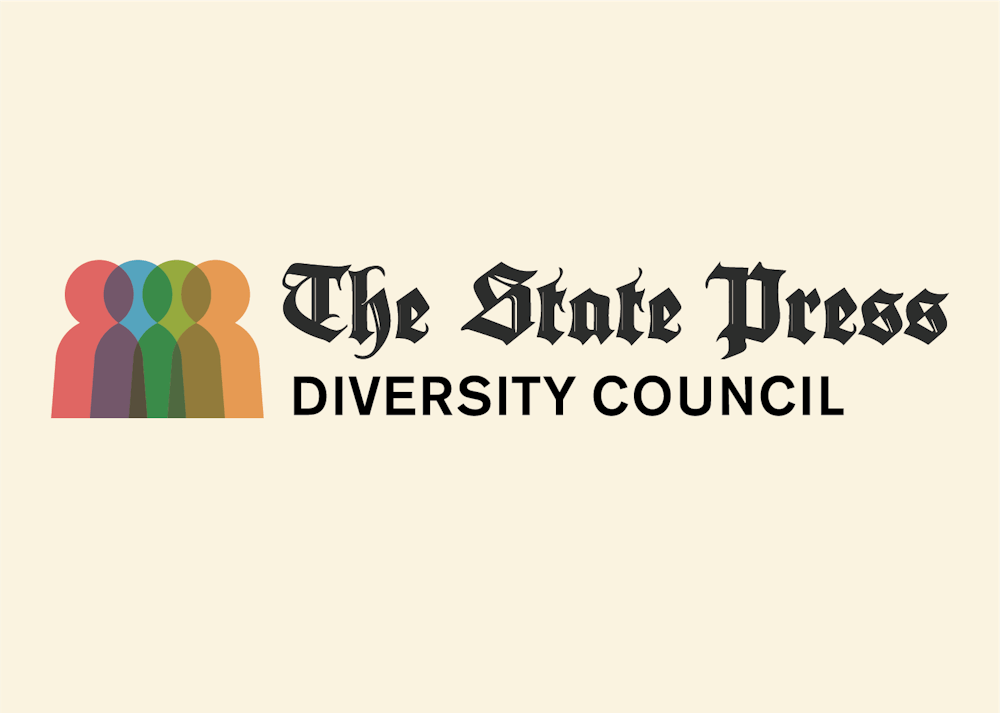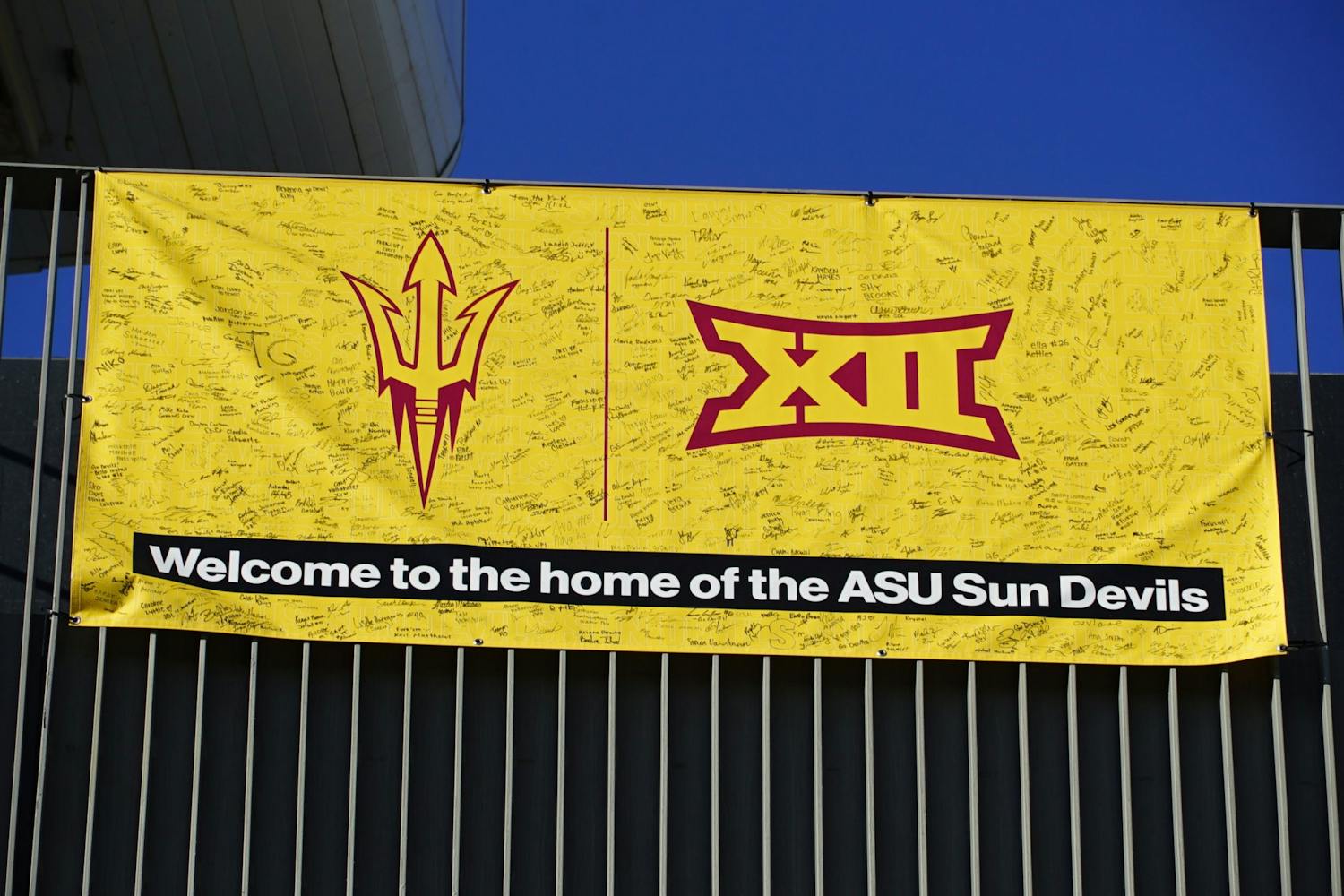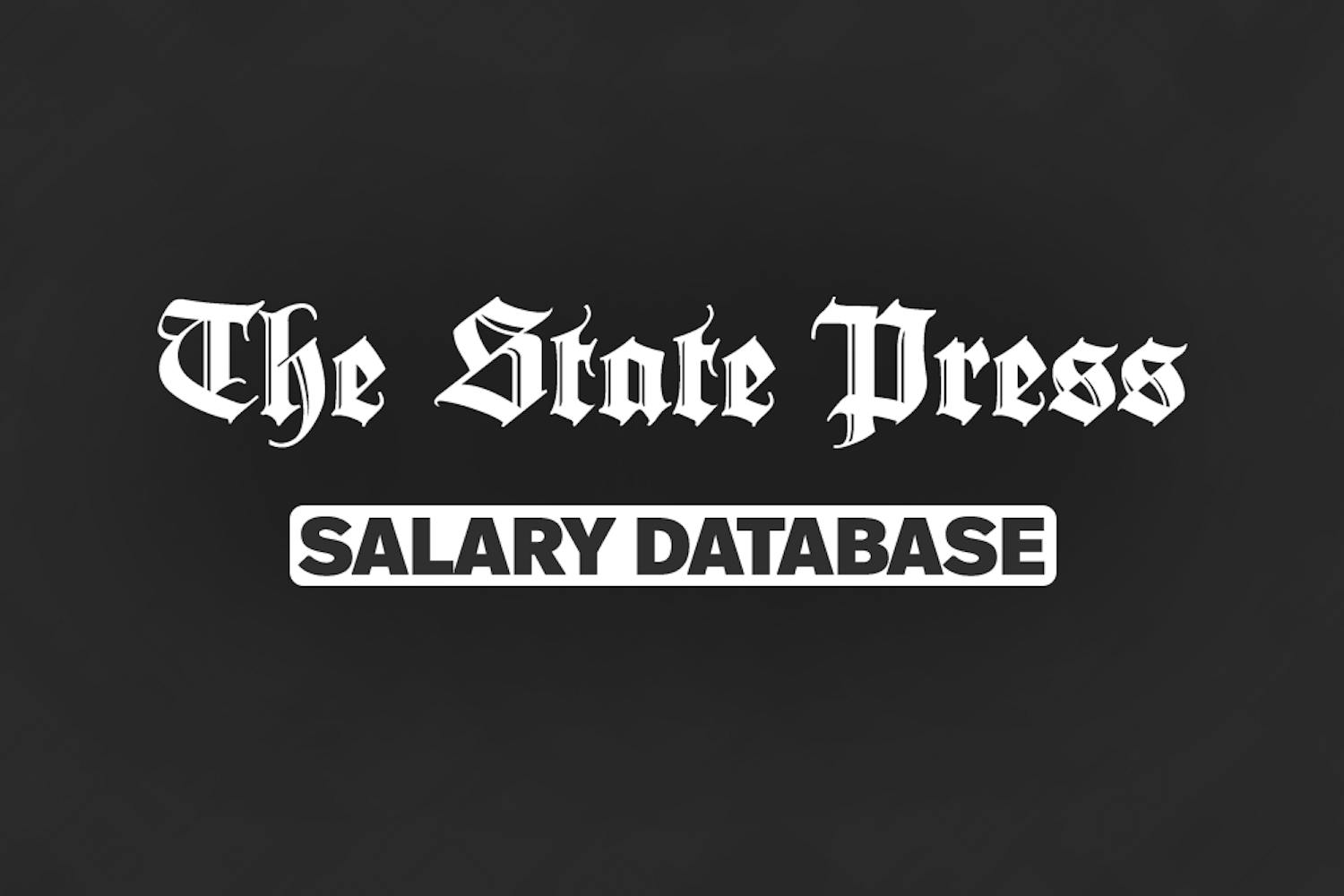At the beginning of this semester, The State Press established its first diversity council with the goal to give staffers from various marginalized communities a space solely to themselves, where they can have a say in newsroom issues and play a vital role in improving them.
Although their roles are still developing, each member of the diversity council has already contributed to improving our newsroom. As this semester comes to a close, The State Press would like to introduce the inaugural council members:
Andrew Onodera, podcast-video editor:
My lived experience has been shaped by being biracial. I am both Latino and Asian. My mom’s family is Mexican, my dad’s family is Japanese, and I am fortunate to be equally connected to both cultures. My racial identity has shaped me into the man I am today. However, in the spirit of transparency, I want to address something I rarely talk about that has been on my mind for a while:
The biracial experience can be very lonely.
Often, I am made to feel like I’m not “Latino enough,” nor “Asian enough,” just because my identity is not entirely one or the other.
Not only do I feel like I have to prove myself to every white teacher, employer and colleague, but I often feel like I even have to prove myself to members of the Latino and Asian communities.
Lately, I’ve been made to feel like being a journalist further isolates me from my communities. There have been people trying to convince me that I need to choose: Am I an ethical journalist who believes in standards or am I a person of color who advocates for an anti-racist world? That is an unfortunate dichotomy because the two are not mutually exclusive.
I am living proof that those two identities can coexist. I am a proud journalist and a proud member of two historically marginalized communities.
Journalism is far from perfect. I am constantly fighting to ensure that this profession covers BIPOC issues in a fair and representative way. But at its core, journalism is vital. When done right, truth-seeking and storytelling are essential tools needed to create a better society. This is why I chose journalism as a profession, and this is why I will never let anyone tell me that journalism is not compatible with an anti-racist world.
Diannie Chavez, photographer:
Growing up I was always known as the girl who didn’t care what others thought. I grew up in a predominantly white neighborhood and went to school where there weren’t many people like me. Yet, I always embraced my culture in whatever ways possible. Both of my parents were born in Mexico and they have incorporated our culture into the daily lives of my siblings and I. They taught us to not be ashamed of our roots no matter what others said.
As the years passed, however, I began receiving criticism for embracing my roots. As a Mexican-American, people would claim that I wasn’t Mexican enough or wasn’t American enough. That’s the issue, though. How do you become more Mexican if it’s in your blood? How do you embrace your culture even more if you already make it part of your everyday life? This made me doubt myself and my own culture. That is not how it should be.
As a journalist, I’ve been told that my culture can affect the objectivity of my work. The criticism I received growing up was starting to show in professional settings. That shouldn't be the case. Who a person is shouldn’t be seen as a hindrance to complete their work in a professional manner. It should be seen as an opportunity to give a platform to marginalized communities and make topics not typically talked about known. That is why I chose to study journalism and why I chose to join the diversity council.
Erin Galindo, politics reporter:
Who I am and how I carry myself to this day is shaped by the color of my skin. I grew up ashamed, insecure and erased from my identity as a Latina because I was always ridiculed for being upset when kids picked on me for being “too dark.” Timid and influenced by their gaslighting, I grew up detached from my Brown and Mexican identity.
I started journalism in high school with a desire to learn about the millions of unique people in this world and eager to uplift the voices I knew were underrepresented — including my own Latinx community. But I also started journalism fed with the notion that my identity was a hindrance to the objectivity of my work. It was my instructor who made me feel like I couldn’t tackle the issues that marginalized my community; that I couldn’t tell these stories to the fullest transparency. All I knew was the concept of objectivity that was defined by elite white people for elite white people. I started journalism, feeling once again, that my identity was forbidden and it forced me deeper into the void I already created out of repression and insecurity.
I joined this diversity council because I should be unapologetic in my own skin. I'm here because BIPOC identities are not biased. We should not be hushed for our existence.
Grace Lieberman, business and tech editor:
I don’t write about myself ever, and that’s partly the reason I chose journalism and to be a member of this council. My strength is my writing, and I’ve spent my life consuming news. I’ve seen the power journalism has and the damage it can cause. As a journalist, I will fight for honest and informed coverage that uplifts and platforms communities most hurt and underserved by the media. When I realized the major institutional issues are rooted in the newsroom, I knew my work needed to extend beyond reporting. This council is an opportunity to critically examine and change the structure of an institution that has left out so many.
I am Jewish, queer and invisibly disabled, but I am not a target for discrimination. Society mostly perceives me as a cisgender, non-disabled, straight white woman, so I’m protected from discrimination and trauma people from my communities don’t have the luxury of avoiding. It’s hard feeling sometimes like I’m in disguise, but it’s nothing compared to my peers who have no choice but to own their identity and be scrutinized for it. It’s unbelievably wrong that the way I look gives me social capital and protection, and I want to find a way to give up my privilege to those who don’t have it. I want to change what it means to be a good journalist. I want to be a public servant, not a public figure. Uplifting voices and working to create an industry that’s for everyone is the best way I know how.
READ MORE: Letter from the Diversity Officer: Existence is Resistance
Itzia Crespo, magazine managing editor:
I’ve held the weight of “otherness” since before I could even understand where it stemmed from — the parts of me that set me apart from a majority of my peers growing up. My skin, my sexuality and my experience were deemed too taboo or undesirable for entertainment media, and I spent a majority of my youth feeling that they were something to hide. When I started writing, I could be seen for my voice on paper; I could be seen without the traits that some people deemed as a bias from a queer Mexican immigrant. And so, when I entered my first newsroom at The State Press, I found myself mixing my voice and identity for the first time. My experience gave me the ability to see stories in the faces around me, along with the understanding and compassion required to cover these communities.
I joined the diversity council this semester because I care about the future of this industry and want to make it reflective of people of all backgrounds. I want journalism to be consumed by a small child of a similar experience, and for them to know someone is in their corner listening.
Jennifer Dam, illustration editor:
I am a second generation Vietnamese-American and queer.
I grew up in a white neighborhood, and there’s a common saying that goes “I’m too Asian for the whites but I’m too white for the Asians.” For as long as I can remember, the color of my skin separated me from my peers, and my peers separated me from my culture.
I’ve been in many situations where my voice wasn’t heard by white administrators. The education system never understood my lived experience. They did not understand how stereotypes, words and hand gestures were harmful and have an everlasting impression. They brushed it off and punished me for standing up for myself.
Childhood racial trauma is real.
My cultural identity became difficult to navigate and I began to loathe myself for the color of my skin.
It took me a lot of time and learning to acknowledge that the color of my skin is what makes me special. My parents immigrated to the United States after the Vietnam War and I could not be more proud to see the obstacles they’ve overcome. The values and traditions that ground me are because of them.
To be honest, I wouldn’t consider myself a journalist. The State Press is the first newsroom where I’ve worked as an illustration editor. I’m still here because State Press has given me a space where my voice matters, and I want to provide that anywhere else I work. Art may be subjective, but it also has a long history of only highlighting white faces. Representing marginalized communities within multimedia is important to me and is something I’m actively working on with my desk.
I joined the diversity council because BIPOC voices come in many colors, and being able to listen and share different lived experiences has been a privilege. The art community contains people from all backgrounds and traditions. I want to uplift local artists surrounding me because after all, they are the ones that inspire me most.
Raphael Romero Ruiz, magazine opinion columnist:
The first time I ever considered being a “journalist” was after watching a Brazilian movie called Cidade de Deus or City of God. I was in high school, working part-time at Office Max, and my partner and I bought me my first camera. The movie showed me that taking photos of my community was important and had value to it, so I started taking photos of the people around me.
Growing up, the only photos/videos/stories coming out of Southside Tucson were about murder, robbery and drive-by shootings. Even though they were true, I also knew there were other things happening in my community that weren’t Brown and Black people committing crimes. Stories of inspiring young people pushing through obstacles many low-income BIPOC face; stories of immigrant business owners who were working hard on the street corners to put food on the table for their families; stories of many proud people who did not fit the stereotypes the news and media had created. I joined this industry to seek those stories and report on them, telling the whole world the full truth of my community and many others like mine.
Journalism has its faults and I have run into those walls many times. However, I have persisted because I know how powerful storytelling can be, and journalism has provided me a space to be able to tell those meaningful stories. My work matters because now the next generation of Rose neighborhood babies can grow up with a different set of stories from where they are from and be proud of where they come from.
Have a question? Email diversity.statepress@gmail.com




